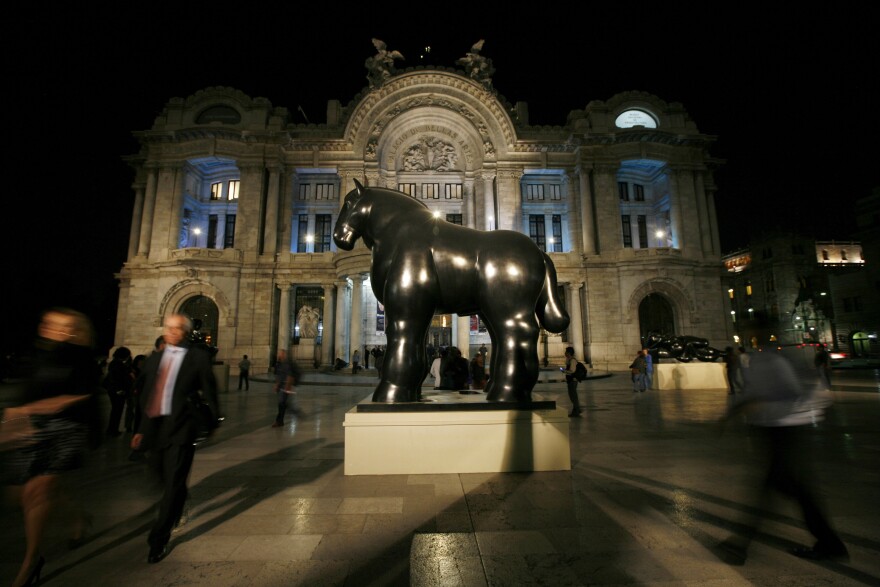BOGOTA, Colombia (AP) — Renowned Colombian painter and sculptor Fernando Botero, whose depictions of people and objects in plump, exaggerated forms became emblems of Colombian art around the world, has died. He was 91.
Lina Botero told the Colombian radio station Caracol that her father died Friday morning in Monaco of pneumonia complications.
Botero depicted politicians, animals, saints, and scenes from his childhood in an inflated and colorful form that was instantly recognizable. During his lifetime the artist attained global fame and influence, despite his humble origins, and his paintings were exhibited around the world, while his imposing bronze sculptures can be found in the parks and avenues of many European and Latin American capitals.
"His success was truly immense" Botero's son Juan Carlos, wrote in a biography of his father, published in 2010. "Fernando Botero has created a unique style, that is original and easy to recognize."
Botero was born on April 19, 1932 in Medellín, Colombia. As a child he was enrolled by an uncle in a bullfighting school that he soon left, but it was a world captured later in his paintings. He decided at age 14 to dedicate his life to the arts. His mother supported the decision, but told him he would have to pay for his studies.
As a teenager, Botero participated in a group exhibition in Bogota, and had his first individual exhibition there in 1951. In the following year, he went to Madrid to study at the Royal Academy of Fine Arts of San Fernando. Later, in Florence, he learned the technique of fresco painting at the Academia San Marcos.
From Europe, he traveled to Mexico to study the work of Diego Rivera and José Clemente Orozco.

During his travels, Botero married Gloria Zea, with whom he had three children, Fernando, Lina and Juan Carlos. Returning to Bogotá in 1958, he was appointed professor at the School of Arts of the National University. He later divorced and took up residence in New York in 1960.
In the 1960s Botero began experimenting with the volume of objects and people in his paintings. His original plump creations attracted the attention of art critics and, by then, the painter had created hundreds of drawings as well as some 1,000 paintings.
Botero remarried in 1964 with Cecilia Zambrano and in 1970 they had a son, Pedro, who died four years later in a car accident in Spain. Botero also divorced Zambrano. He captured the pain after the death of his son in the painting "Pedrito." He also donated 16 works to the Museum of Antioquía, in Medellín, to honor the boy and in turn the museum named a room in memory of "Pedrito Botero."
In the 1970s, Botero put aside painting and began to experiment with sculptures in bronze, marble and cast iron, which brought him great success. In 1978 Botero returned to painting, and then alternated between the two disciplines.
Botero said he would paint every day from morning until night, and in absolute silence, so as not to allow anything to distract him.
"Fernando Botero is one of the most disciplined people you can meet. His friends and family affirm that he works every day of every year. For Botero there are no rest dates, no holidays, no weekends," his son Juan Carlos Botero wrote in his book. At Christmas, "he is painting. On his birthday, he is painting. On New Year's, he is painting."
Botero dearly loved his home country and made three major donations to the Museum of Antioquia over the years.
In the 1990s, Botero produced voluminous sculptures for display in Monte Carlo and on the Champs Elysées in Paris, becoming the first foreign artist to show his work in these spaces.
In 1995, his bronze sculpture "The Bird," weighing more than 1.8 tons and displayed in a park in Medellín, was dynamited by unknown attackers, causing the death of 22 people and injuring more than 200.





